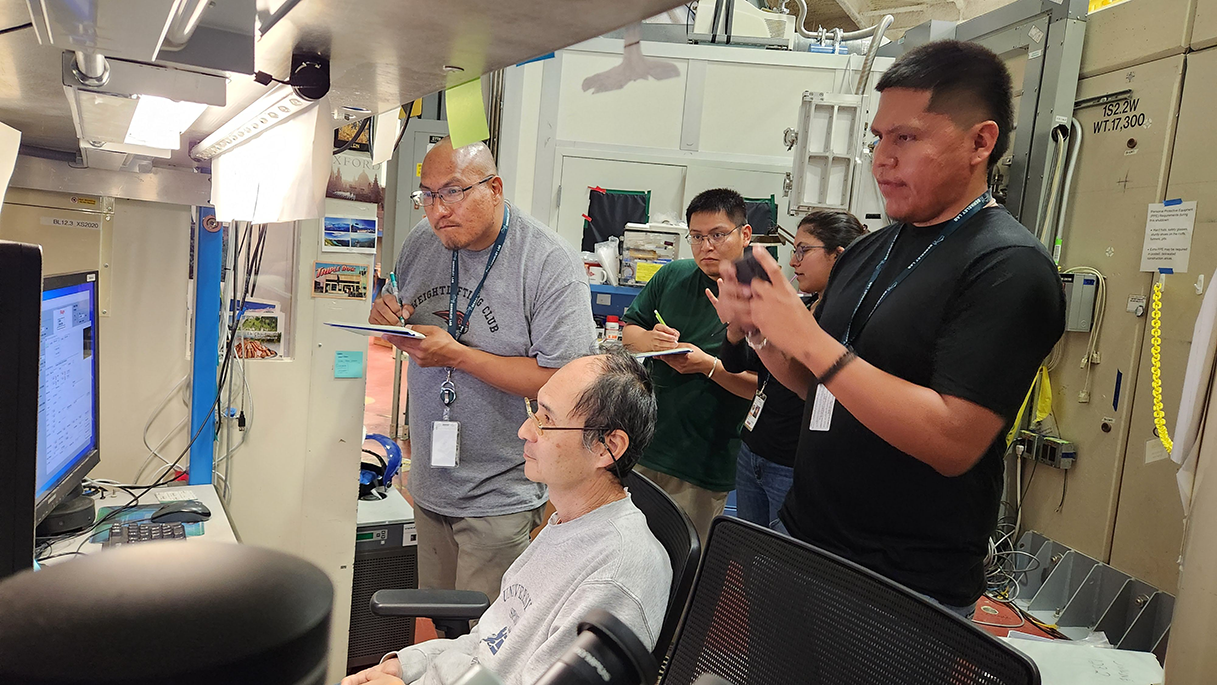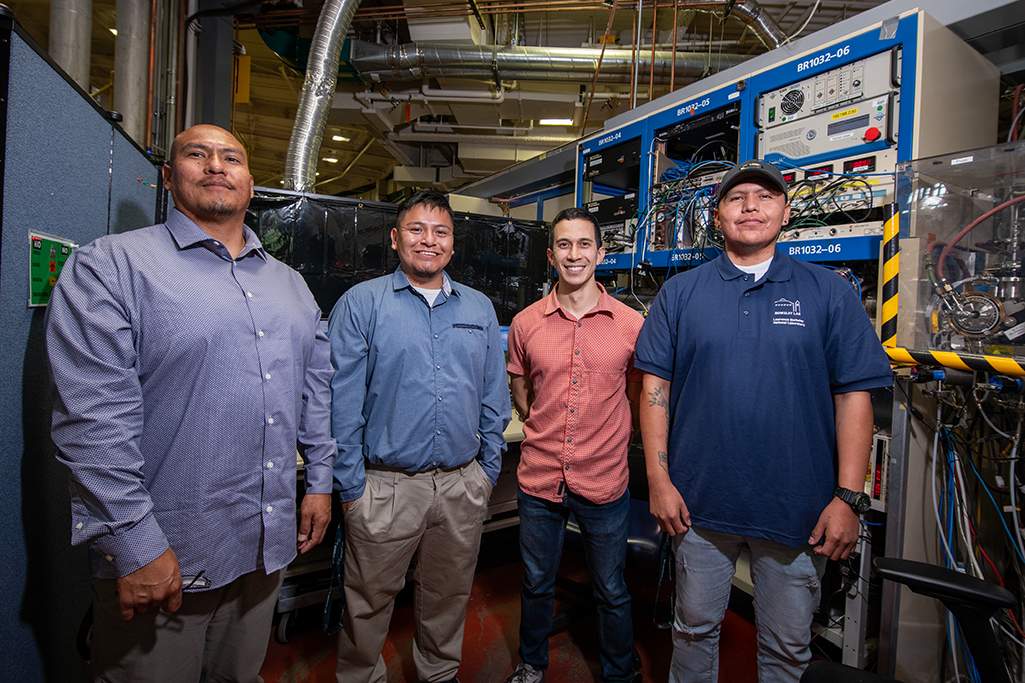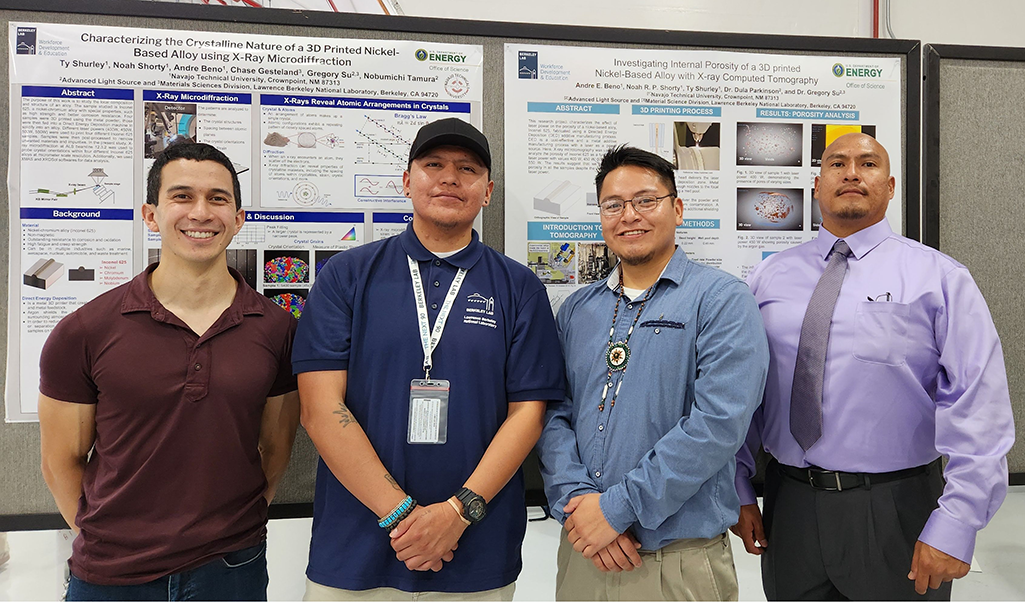This past summer, Berkeley Lab hosted three students from Navajo Technical University in Crownpoint, New Mexico, who participated in the CAMPS – Controlling Additive Manufacturing Properties of Surfaces – project which is funded through the Department of Energy’s Reaching a New Energy Sciences Workforce (RENEW) initiative.
A major part of the partnership is workforce development and involves giving undergraduate students from institutions whose populations are underrepresented in science, technology, engineering, and math a hands-on opportunity to work in a certain area of STEM. The partnership is a companion to the Arizona State University-Berkeley Lab STEM Pathways (ABSP) program, which seeks to increase the number of Native American students in STEM graduate programs.
“In our projects, the science is focused on understanding the structure of materials that are made through 3D printing or additive manufacturing, which leverages Navajo Technical University’s resources and capabilities to create materials with 3D printing,” said Gregory Su, a staff scientist at Berkeley Lab’s Advanced Light Source and the principal scientist who worked with the students while at the Lab.
Three Navajo Tech students participated in CAMPS this year: Andre Beno, Ty Shurley, and Noah Shorty. Monsuru Ramoni, a former Navajo Tech professor who is now an assistant professor in the Department of Manufacturing and Industrial Engineering at the University of Texas Rio Grande Valley, selected and advised each.
The students investigated 3D-printed metal alloys, specifically nickel-based alloys printed under varying conditions, such as what laser power was used. Once the students printed the samples at Navajo Tech, they were sent to Berkeley Lab for the students to study during their summer at the Lab.
“We have unique capabilities at LBNL – specifically at the Advanced Light Source – to understand the microscopic structure of those 3D printed metal materials,” Su explained.

Standing from left to right: André Beno, Noah Shorty, Supriya Gupta, and Ty Shurley. Sitting is ALS scientist Nobumichi Tamura.
They spent approximately two months working at the Lab and living at UC Berkeley’s International House alongside ABSP interns. The budding researchers were able to use three separate beamlines at the ALS and explored different X-ray-based techniques to look at materials, including X-ray diffraction, X-ray tomography, and X-ray fluorescence imaging.
Beno, who is in his third year working on a bachelor’s degree in environmental engineering at Navajo Tech, said the program “really gives you great hands-on experience. I recommend it to other people. I’ve told them to take advantage of these internships as much as you can.”
Shorty, who is also in his third year at Navajo Tech, working on a bachelor’s degree in environmental engineering, pointed to the opportunities the students had to visit and work at Lab facilities such as the ALS and the supercomputers at NERSC, as well as a trip to the SLAC National Accelerator Laboratory.
“Growing up on a reservation, it was a pretty small world,” Shorty said. “But now that I was exposed to the Bay Area, and to things I could have never thought humans could do – the whole experience is something I’ll never forget.”
Lab physicist Dula Parkinson, who is in charge of the tomography beamline at ALS, was involved in multiple aspects of the students’ work. Along with Nobumichi Tamura on the X-ray diffraction side of the research, Mark Asta and Peter Hosemann, in the Materials Sciences Division of the Energy Sciences Area, worked with the students on simulations, data analysis, and theory, among other activities.
The Lab’s Workforce Development & Education Department administered the internship program for CAMPS, which included access to a cohort of interns from 12 other programs, opportunities to learn about Berkeley Lab, and professional development opportunities to learn about graduate school and STEM careers.
Su noted that there is funding available for the program to continue through the summer of 2025.

